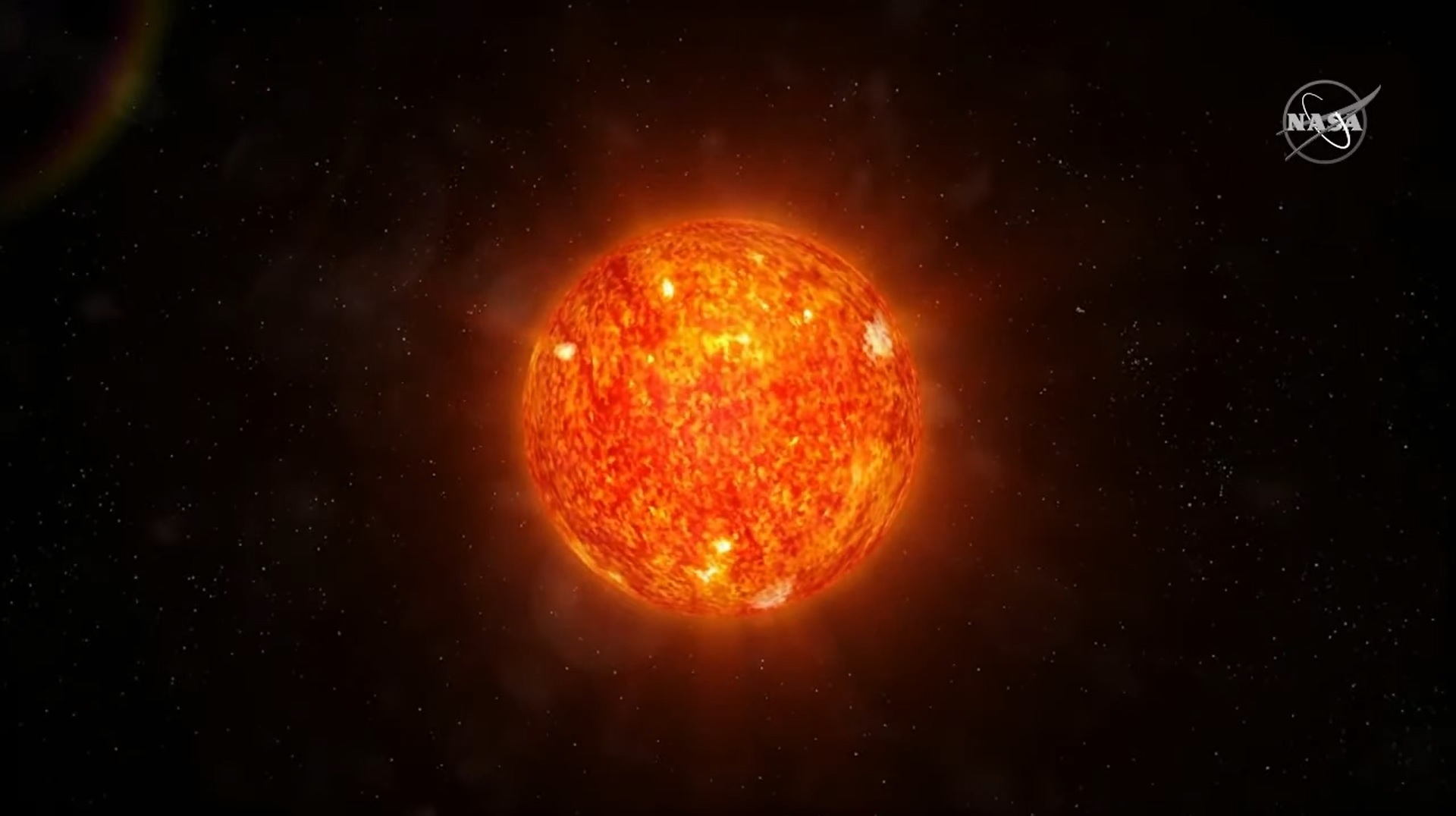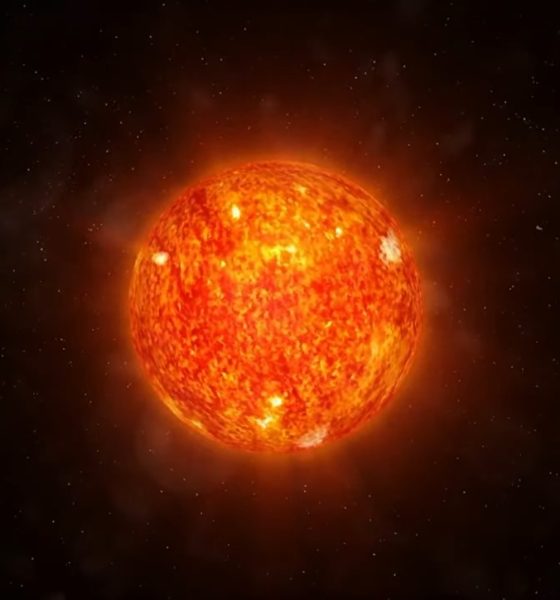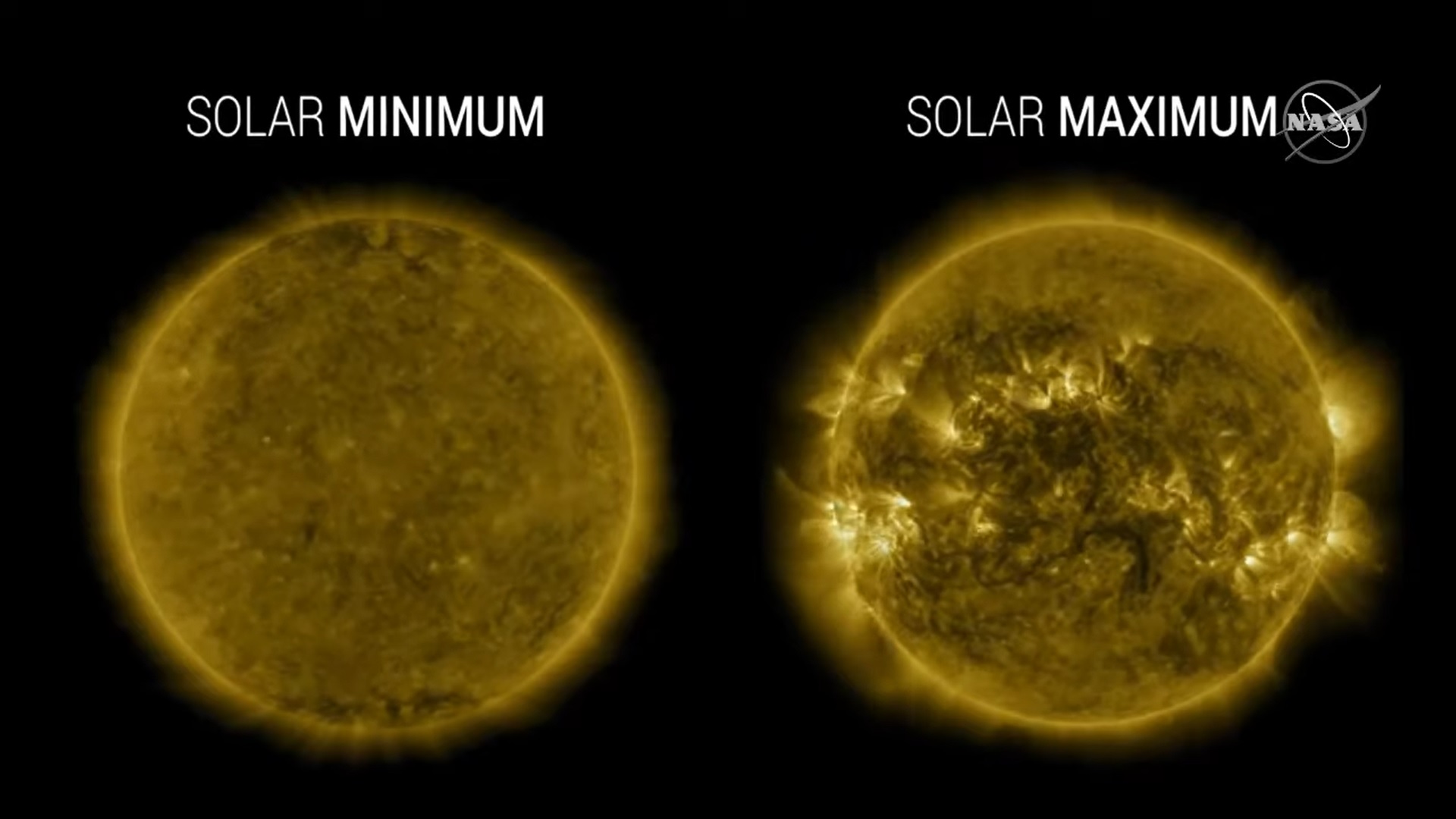

News
NASA confirms the Sun’s new solar cycle; Moon and Mars missions will have to adapt
NASA just announced that our Sun began a new solar cycle this year – its 25th to be exact – after reaching a solar minimum in December 2019. Solar weather activity is now expected to increase for the next five years until reaching a maximum in July 2025. With several space missions planned during that time frame for both the Moon and Mars, the Artemis program, in particular, involving astronauts on board, extra preparation and consideration will have to be made to weigh the impact of the increasing radiation events.
“Space weather predictions are…critical for supporting Artemis program spacecraft and astronauts,” NASA’s announcement detailed. “Surveying this space environment is the first step to understanding and mitigating astronaut exposure to space radiation.”
Solar activity is tracked by agencies around the world by counting the number of sunspots (black spots) that appear on the Sun. Each one is an indicator of some type of high-energy activity such as solar flares or coronal mass ejections, and their appearance means a large amount of Sun material has been ejected into space. This material can cause disruptions on Earth, in orbit, or on anything in the deep space region nearby our star. Satellites in particular have to cope with solar interruptions frequently, although algorithms and engineering tend to mitigate much notice from a consumer standpoint.

While the Artemis mission will certainly have to take on the new challenge of a Sun that’s becoming more and more active as time goes on, solar cycles aren’t something new to NASA’s human spaceflight program.
“As we emerge from solar minimum and approach Cycle 25’s maximum, it is important to remember solar activity never stops; it changes form as the pendulum swings,” explained Lika Guhathakurta, solar scientist at the Heliophysics Division at NASA Headquarters in Washington, in the solar cycle announcement. “There is no bad weather, just bad preparation… Space weather is what it is – our job is to prepare,” added Jake Bleacher, chief scientist for NASA’s Human Exploration and Operations Mission Directorate at the agency’s Headquarters.
When astronauts are orbiting the Earth, our planet’s magnetic field protects them from being directly hit by the majority of solar ejections; however, once outside that protective bubble and on their way to another deep space or lunar destination, things can be very dangerous. Radiation issues are often discussed when it comes to human space exploration, but scientists don’t seem to be short of ideas on how to handle it.
☀️ Hearing a lot about our Sun today?
Scientists just announced it’s in a new cycle — meaning that we expect to see solar activity start to ramp up over the next several years.
Find out how these cycles are tracked and how they can affect life on Earth: https://t.co/zerIWT0IWJ pic.twitter.com/e4FD6HD1hF
— NASA (@NASA) September 15, 2020
SpaceX CEO Elon Musk, for example, has proposed passengers en route to Mars using water as shielding. During a solar flare event, all on board would move to a part of the Starship where the liquid was being stored and essentially use it like a basement during bad weather. Given that SpaceX plans to deal with radiation in the longer term via Mars colonization, there may be plenty of other developments coming from the rocket launch (and landing) company in the near future.
Aside from the scientists watching and studying the Sun’s solar activity, the European Space Agency currently has a space probe in orbit around our star. The spacecraft has been sending back the closest pictures of the Sun we’ve ever seen, and a few new features have been observed such as ‘campfires.‘ The probe’s overall mission involves studying and understanding the Sun’s solar cycles and hopefully make space weather prediction akin to the kind of meteorology we have on Earth.
“Just because it’s a below-average solar cycle, doesn’t mean there is no risk of extreme space weather,” Doug Biesecker, panel co-chair and solar physicist at NOAA’s Space Weather Prediction Center (SWPC) in Boulder, Colorado, commented. “The Sun’s impact on our daily lives is real and is there. SWPC is staffed 24/7, 365 days a year because the Sun is always capable of giving us something to forecast.”
NASA held a live-streamed conference discussing the solar cycle announcement which you can watch below:

News
Tesla China delivery centers look packed as 2025 comes to a close
Needless to say, it appears that Tesla China seems intent on ending 2025 on a strong note.

Tesla’s delivery centers in China seem to be absolutely packed as the final days of 2025 wind down, with photos on social media showing delivery locations being filled wall-to-wall with vehicles waiting for their new owners.
Needless to say, it appears that Tesla China seems intent on ending 2025 on a strong note.
Full delivery center hints at year-end demand surge
A recent image from a Chinese delivery center posted by industry watcher @Tslachan on X revealed rows upon rows of freshly prepared Model Y and Model 3 units, some of which were adorned with red bows and teddy bears. Some customers also seem to be looking over their vehicles with Tesla delivery staff.
The images hint at a strong year-end push to clear inventory and deliver as many vehicles as possible. Interestingly enough, several Model Y L vehicles could be seen in the photos, hinting at the demand for the extended wheelbase-six seat variant of the best-selling all-electric crossover.
Strong demand in China
Consumer demand for the Model Y and Model 3 in China seems to be quite notable. This could be inferred from the estimated delivery dates for the Model 3 and Model Y, which have been extended to February 2026 for several variants. Apart from this, the Model Y and Model 3 also continue to rank well in China’s premium EV segment.
From January to November alone, the Model Y took China’s number one spot in the RMB 200,000-RMB 300,000 segment for electric vehicles, selling 359,463 units. The Model 3 sedan took third place, selling 172,392. This is quite impressive considering that both the Model Y and Model 3 are still priced at a premium compared to some of their rivals, such as the Xiaomi SU7 and YU7.
With delivery centers in December being quite busy, it does seem like Tesla China will end the year on a strong note once more.
News
Tesla Giga Berlin draws “red line” over IG Metall union’s 35-hour week demands
Factory manager André Thierig has drawn a “red line” against reducing Giga Berlin’s workweek to 35 hours, while highlighting that Tesla has actually increased its workers’ salaries more substantially than other carmakers in the country.

Tesla Giga Berlin has found itself in a new labor dispute in Germany, where union IG Metall is pushing for adoption of a collective agreement to boost wages and implement changes, such as a 35-hour workweek.
In a comment, Giga Berlin manager André Thierig drew a “red line” against reducing Giga Berlin’s workweek to 35 hours, while highlighting that Tesla has actually increased its workers’ salaries more substantially than other carmakers in the country.
Tesla factory manager’s “red line”
Tesla Germany is expected to hold a works council election in 2026, which André Thierig considers very important. As per the Giga Berlin plant manager, Giga Berlin’s plant expansion plans might be put on hold if the election favors the union. He also spoke against some of the changes that IG Metall is seeking to implement in the factory, like a 35-hour week, as noted in an rbb24 report.
“The discussion about a 35-hour week is a red line for me. We will not cross it,” Theirig said.
“(The election) will determine whether we can continue our successful path in the future in an independent, flexible, and unbureaucratic manner. Personally, I cannot imagine that the decision-makers in the USA will continue to push ahead with the factory expansion if the election results favor IG Metall.”
Giga Berlin’s wage increase
IG Metall district manager Jan Otto told the German news agency DPA that without a collective agreement, Tesla’s wages remain significantly below levels at other German car factories. He noted the company excuses this by referencing its lowest pay grade, but added: “The two lowest pay grades are not even used in car factories.”
In response, Tesla noted that it has raised the wages of Gigafactory Berlin’s workers more than their German competitors. Thierig noted that with a collective agreement, Giga Berlin’s workers would have seen a 2% wage increase this year. But thanks to Tesla not being unionized, Gigafactory Berlin workers were able to receive a 4% increase, as noted in a CarUp report.
“There was a wage increase of 2% this year in the current collective agreement. Because we are in a different economic situation than the industry as a whole, we were able to double the wages – by 4%. Since production started, this corresponds to a wage increase of more than 25% in less than four years,” Thierig stated.
News
Tesla is seeing a lot of momentum from young Koreans in their 20s-30s: report
From January to November, young buyers purchased over 21,000 Teslas, putting it far ahead of fellow imported rivals like BMW and Mercedes-Benz.

Tesla has captured the hearts of South Korea’s 20s-30s demographic, emerging as the group’s top-selling imported car brand in 2025. From January to November, young buyers purchased over 21,000 Teslas, putting it far ahead of fellow imported rivals like BMW and Mercedes-Benz.
Industry experts cited by The Economist attributed this “Tesla frenzy” to fandom culture, where buyers prioritize the brand over traditional car attributes, similar to snapping up the latest iPhone.
Model Y dominates among young buyers
Data from the Korea Imported Automobile Association showed that Tesla sold 21,757 vehicles to the 20s-30s demographic through November, compared to BMW’s 13,666 and Mercedes-Benz’s 6,983. The Model Y led the list overwhelmingly, with variants like the standard and Long Range models topping purchases for both young men and women.
Young men bought around 16,000 Teslas, mostly Model Y (over 15,000 units), followed by Model 3. Young women followed a similar pattern, favoring Model Y (3,888 units) and Model 3 (1,083 units). The Cybertruck saw minimal sales in this group.
The Model Y’s appeal lies in its family-friendly SUV design, 400-500 km range, quick acceleration, and spacious cargo, which is ideal for commuting and leisure. The Model 3, on the other hand, serves as an accessible entry point with lower pricing, which is valuable considering the country’s EV subsidies.
The Tesla boom
Experts described Tesla’s popularity as “fandom culture,” where young buyers embrace the brand despite criticisms from skeptics. Professor Lee Ho-geun called Tesla a “typical early adopter brand,” comparing purchases to iPhones.
Professor Kim Pil-soo noted that young people view Tesla more as a gadget than a car, and they are likely drawn by marketing, subsidies, and perceived value. They also tend to overlook news of numerous recalls, which are mostly over-the-air software updates, and controversies tied to the company.
Tesla’s position as Korea’s top import for 2025 seems secured. As noted by the publication, Tesla’s December sales figures have not been reported yet, but market analysts have suggested that Tesla has all but secured the top spot among the country’s imported cars this year.








